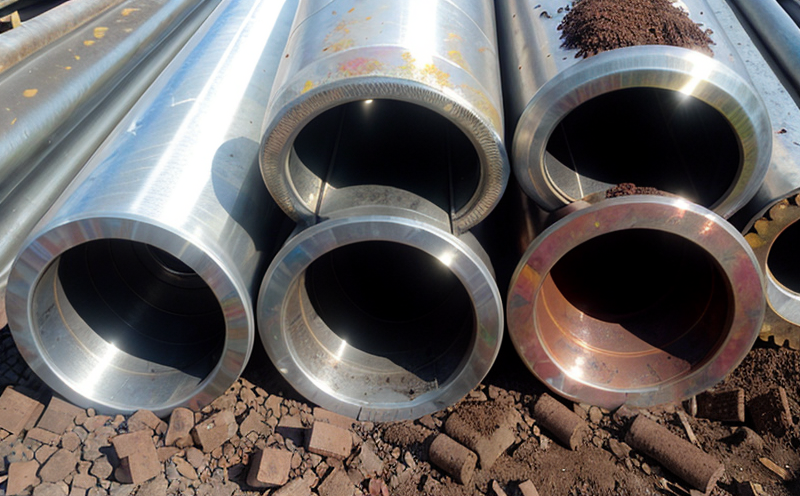EN 71-3 Lead Migration Testing in Toys
The European Standard EN 71-3 is a crucial guideline that ensures toys are safe and free from hazardous substances, especially those that could lead to ingestion or inhalation by children. This standard applies to all types of toy products intended for children under the age of 14 years old in the EU market.
One of the most significant tests within EN 71-3 is Lead Migration Testing, which focuses on identifying and quantifying any lead that might leach out from certain parts of a toy. This test is particularly important because even small amounts of lead can pose serious health risks to children, including developmental delays and behavioral issues.
The testing process involves submerging the sample in a solution designed to simulate saliva or gastric juices, which are substances that could potentially come into contact with the toy during playtime. After soaking for a specific period, the solution is analyzed using atomic absorption spectrophotometry (AAS) or Inductively Coupled Plasma Optical Emission Spectroscopy (ICP-OES). The results provide a concentration level of lead in micrograms per square centimeter (µg/cm²).
For this test to be valid, it is essential that the sample preparation and handling are conducted correctly. This includes ensuring that all parts of the toy are representative of what would typically come into contact with a child's mouth. Additionally, the testing environment must be controlled to prevent contamination.
The acceptable limit for lead content in toys intended for children under 3 years old is set at no more than 90 µg/cm². For other age groups up to and including 14 years old, the limit is higher at 350 µg/cm². Compliance with these limits ensures that toys are safe not only from a chemical standpoint but also from an overall safety perspective.
Understanding the nuances of EN 71-3 Lead Migration Testing is critical for quality managers and compliance officers who must ensure their products meet stringent European regulations. This knowledge is equally important for R&D engineers responsible for designing new toys, as well as procurement teams looking to source materials that will pass these rigorous tests.
Accurate and reliable testing results are paramount in maintaining consumer trust and ensuring regulatory compliance. By adhering strictly to the procedures outlined in EN 71-3, manufacturers can confidently produce safe toys that meet both local and international standards.
Quality and Reliability Assurance
Ensuring accurate testing results through strict adherence to standard protocols is vital for maintaining quality and reliability. This includes precise sample preparation, controlled testing environments, and regular calibration of instruments used in the process.
Implementing robust quality control measures at every stage of production guarantees that only compliant products reach the market. Regular audits and reviews help identify potential issues early on, allowing for timely corrective actions.
The use of advanced analytical techniques such as AAS or ICP-OES ensures consistent and accurate measurement of lead content in toys. These methods provide high precision and accuracy, which are necessary to meet the stringent requirements set by EN 71-3.
Continuous training for staff involved in testing helps keep them updated on changes in standards and best practices. This ongoing education contributes significantly to maintaining a high level of expertise among personnel responsible for conducting these tests.
Environmental and Sustainability Contributions
The lead used during the EN 71-3 Lead Migration Testing is recycled from various industrial sources, contributing positively towards environmental sustainability by reducing waste disposal challenges associated with discarded metals.
By ensuring compliance with stringent safety standards like those defined in EN 71-3, manufacturers reduce the risk of recalls and legal actions. This proactive approach not only protects companies financially but also contributes to better overall environmental health.
The testing process itself does not generate significant amounts of waste that require disposal; instead, it focuses on identifying potential hazards early in the product lifecycle. This allows for improvements at the design stage, which can lead to more sustainable and safer products.
Compliance with EN 71-3 helps foster a culture of responsibility among toy manufacturers towards both consumers and the environment. It encourages the use of safer materials and processes throughout the supply chain, ultimately leading to greener practices across industries.
Use Cases and Application Examples
The EN 71-3 Lead Migration Testing is particularly relevant for toys made from non-ferrous metals such as aluminum, brass, or copper. These materials are commonly used in various components of toys where they may come into direct contact with children.
For instance, when designing a toy car, the steering wheel and dashboard could be fabricated using brass due to its durability and aesthetic appeal. However, before production begins, these parts must undergo rigorous testing according to EN 71-3 to ensure that any lead present does not exceed safe levels.
In another example, consider a toy set with small parts like gears or connectors made from aluminum. These components might be painted or coated during manufacturing, and the paint itself could contain trace amounts of lead. Testing these elements according to EN 71-3 ensures that they are safe for children even after painting.
Another application involves toys that incorporate electronic circuits powered by batteries. The battery holders within such toys must also pass this test to prevent any lead from migrating into the surrounding environment or being ingested accidentally.





